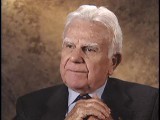You searched for: 代谷歌seo竞价霸屏靠谱【TG飞机:@bapingseo】卡塔尔推广谷歌广告【TG电报:@bapingseo】先要谷歌收录您的网站【Telegram:@bapingseo】AG娱乐投注wt123手机网投?L2vjTW/087898.html
<< Previous | Displaying results 171-180 of 395 for "代谷歌seo竞价霸屏靠谱【TG飞机:@bapingseo】卡塔尔推广谷歌广告【TG电报:@bapingseo】先要谷歌收录您的网站【Telegram:@bapingseo】AG娱乐投注wt123手机网投?L2vjTW/087898.html" | Next >>
-
Hans Vogel's diary entry on arriving in New York
ArtifactHans Vogel and his family fled Paris following the German invasion. They eventually received papers allowing them to immigrate to the United States. During this time, Hans kept a diary that contains postcards, hand-drawn maps, and other illustrations of their flight. This page describes arriving in New York. Hans was born in Cologne, Germany on December 3, 1926. The family left Germany in 1936, settling in Paris. They remained there until the outbreak of World War II. Hans's father, Simon, was interned…
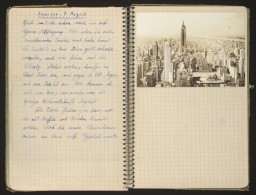
-
Curt Egon Rosenberg
ID CardCurt was the oldest of three children born to a Jewish family in the famous German university city of Goettingen. His father owned a linen factory that had been in the family since it was founded by Curt's grandfather. Goettingen had a small Jewish population, with only one synagogue. Curt attended public school in the city. 1933-39: The Nazis came to power in 1933. A year later, the Rosenbergs' factory was seized and the family was forced to move to Hamburg. Because he was Jewish, Curt was arrested in…
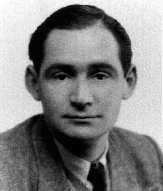
-
Frances Perkins
ArticleFrances Perkins was FDR's secretary of labor. Learn about her role in the rescue of European Jews whose lives were threatened by the Nazi regime.

-
Beifeld album page outlining the labor service's roles in the war effort
ArtifactA page of drawings illustrating the contribution of Jewish Labor Servicemen to the war effort. At the top: "The different platoons work hard at the battle front and in the no man's land [between the armies]. They actively participate in the fighting. They carry ammunition to the Hungarian soldiers." In the middle: "They defuse land mines. They bury the dead, including those that had been left unburied from the winter campaign. They carry soldiers wounded on the front lines to safety." At the bottom: "For…
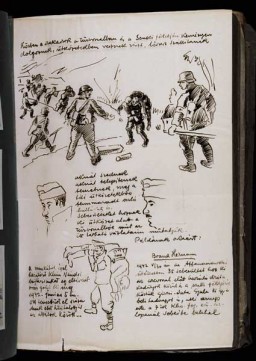
-
Buchenwald concentration camp
FilmClip from George Stevens' "The Nazi Concentration Camps." This German film footage was compiled as evidence and used by the prosecution at the Nuremberg trials.
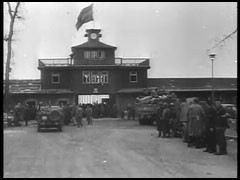
-
Liberation of Auschwitz: Child survivors
FilmSoviet military footage showing children who were liberated at Auschwitz by the Soviet army in January 1945.
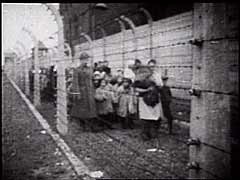
-
Books burn as Goebbels speaks
FilmIn their drive to rid the country of all that they deemed "un-German," the Nazis publically burned books in cities across Germany. Here in front of the Opera House in Berlin, a chanting crowd burns books written by Jews and leftist intellectuals. Joseph Goebbels, Hitler's minister of propaganda and public information, speaks of the intended "reeducation" of Germany.

-
Doriane Kurz describes appell (roll call) in Bergen-Belsen
Oral HistoryDoriane's Jewish family fled to Amsterdam in 1940, the same year Germany occupied the Netherlands. Her father died after deportation to Auschwitz. After their mother was seized, Doriane and her brother hid with gentiles. The three were reunited at Bergen-Belsen, where they were deported via Westerbork. They were liberated during the camp's 1945 evacuation, when Doriane was 9. Her mother died of cancer soon after Doriane helped her recover from typhus. Doriane and her brother immigrated to the United States.
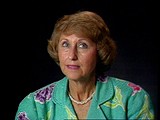
-
Irene Weber describes how obtaining a work card could offer protection from deportation
Oral HistorySeparated from her family, Irene was deported from the Sosnowiec ghetto to the Gleiwitz camp in March 1943. After a death march and an attempted escape from a transport out of Gleiwitz, Irene was imprisoned in Prague, then Theresienstadt, where as a political prisoner she was sentenced to death by starvation. For the five months before liberation, she shared a cell with 59 ailing women. Irene was the sole member of her Jewish family to survive the war.

-
John Dolibois describes attitude of captured Nazi leaders
Oral HistoryJohn Dolibois immigrated to the United States in 1931 at the age of 13. After graduating from college, Dolibois joined the 16th Armored Division of the US Army. Due to his German language skills, he became involved in military intelligence. He returned to Europe in this capacity toward the end of World War II. Dolibois interrogated German prisoners of war, including leading Nazis, in preparation for the postwar trials of war criminals. He was later appointed US ambassador to Luxembourg, his birthplace.
